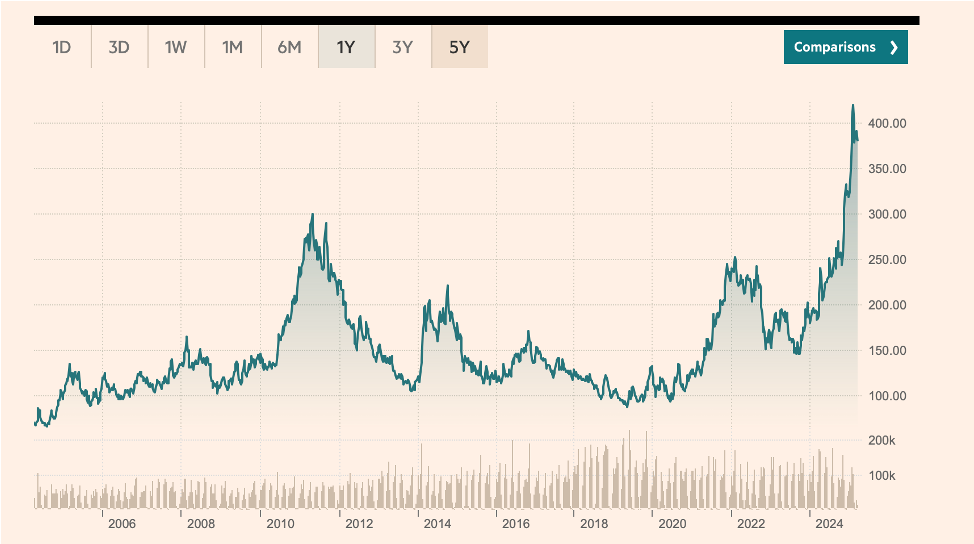Why Your Coffee Is Getting More Expensive
Since mid-2023, coffee commodity prices have surged dramatically, causing ripple effects throughout the industry. Arabica bean prices, which dominate global coffee consumption, recently peaked at over $4.00 per pound on the Intercontinental Exchange, marking an all-time high. Over the past three months alone, prices have risen by more than 50%, and year-over-year increases have approached 95%.
Several converging factors have contributed to this unprecedented price spike, including adverse weather conditions, economic pressures, and geopolitical instability.
Arabica Coffee Prices 2005 – 2025: Chart courtesy of the Financial Times.
Weather Disruptions in Key Producing Regions
Brazil, the world's largest coffee producer, has faced a prolonged drought throughout 2024, significantly impacting its arabica coffee yield. Official estimates suggest that Brazil's arabica output could decline by at least 12% this year, exacerbating global supply concerns. Similar climatic disruptions have affected other major coffee-producing nations, including Colombia and Vietnam. Unfavorable weather conditions, such as excessive rainfall in some regions and droughts in others, have reduced yields and driven up production costs.
Tariffs
Uncertainty surrounding tariffs and trade policies has introduced volatility into the coffee commodities market. Recent discussions over potential tariffs on agricultural imports have created supply chain disruptions, particularly affecting Latin American coffee exports to the U.S. market. Additionally, tensions between exporting and importing nations have resulted in fluctuating trade agreements, further destabilizing pricing.
What This Means for Coffee Consumers
For consumers, the impact of these rising prices is already apparent. Many coffee roasters and retailers have had to adjust their pricing strategies to accommodate higher costs, leading to more expensive coffee at cafés, grocery stores, and online retailers. While some companies have absorbed part of the cost increase, sustained high prices may result in more permanent shifts in pricing across the industry.
As coffee remains one of the most traded commodities globally, its price fluctuations reflect broader economic and environmental challenges. While industry experts hope for stabilization, ongoing weather concerns, economic pressures, and policy decisions will continue to shape the coffee market.

